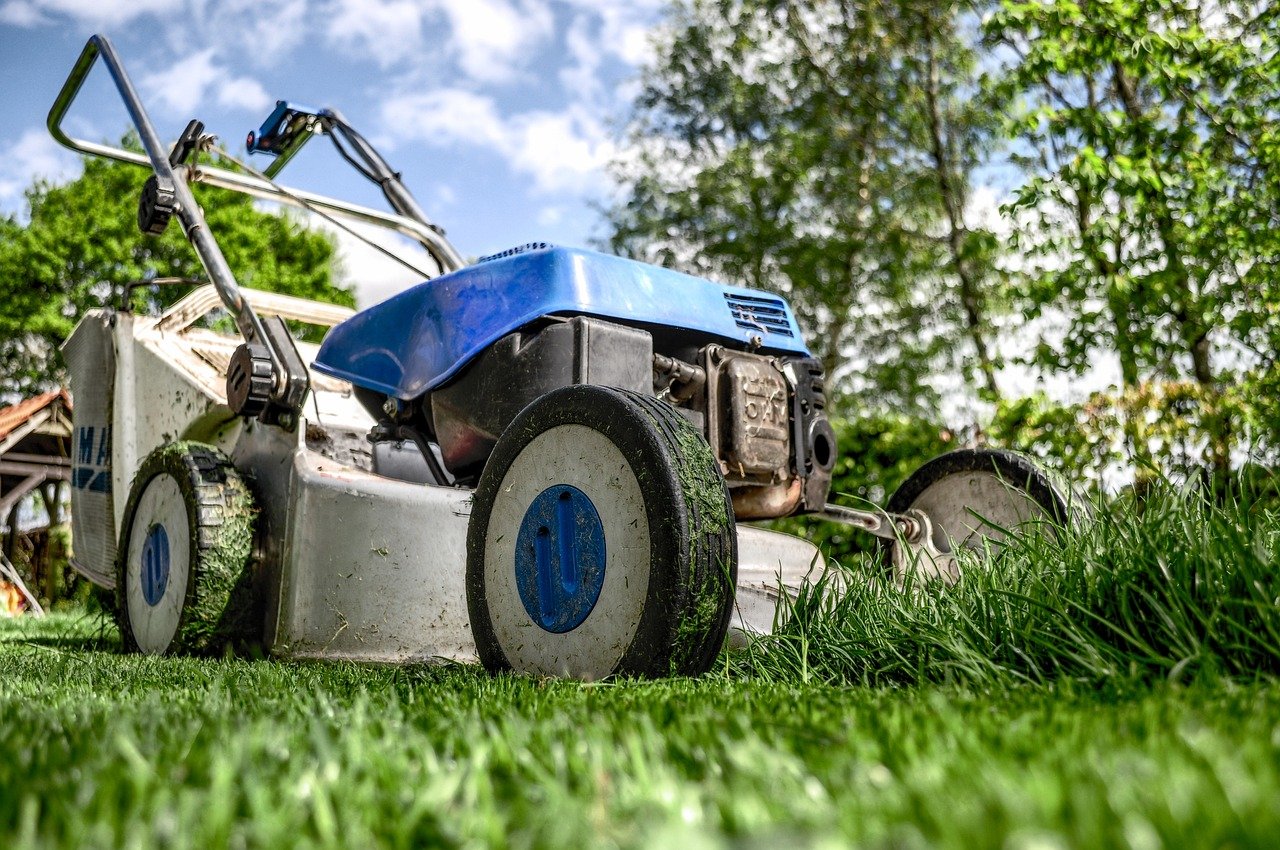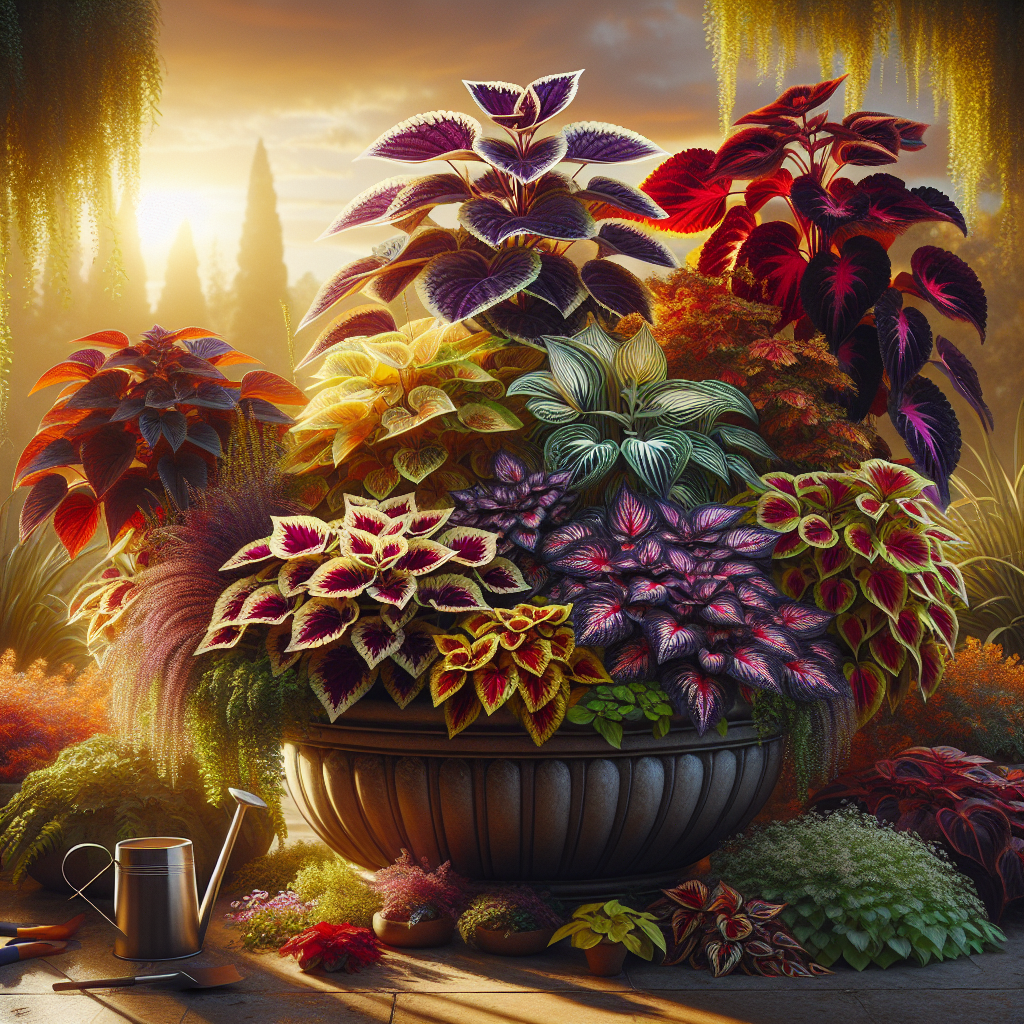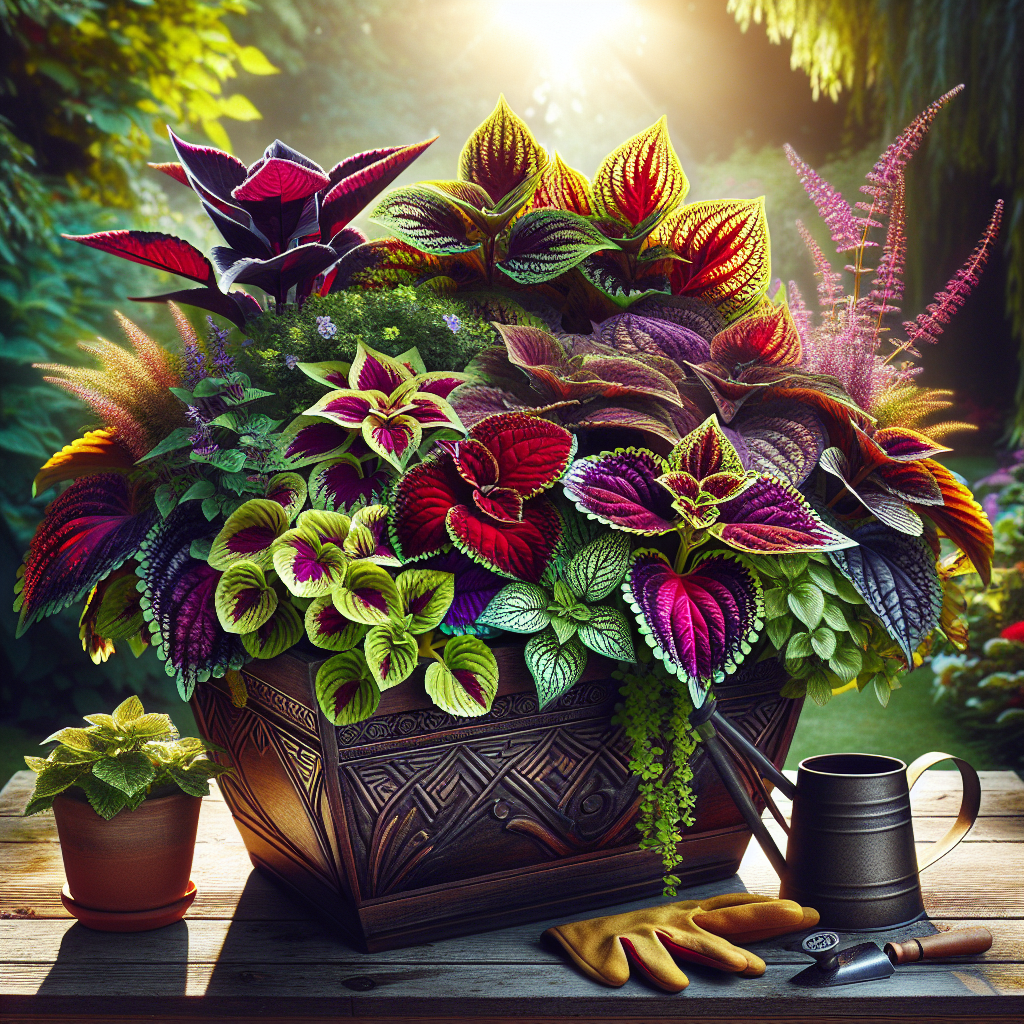
If you’re looking to add a splash of vibrant color and lush foliage to your outdoor space, look no further than creating a beautiful container garden with coleus. With its stunning array of leaf colors and patterns, coleus is a versatile and easy-to-grow plant that can instantly transform any dull corner into a captivating oasis. Whether you have a small balcony or a sprawling backyard, this article will provide you with all the necessary tips and tricks to successfully cultivate a stunning container garden filled with the beauty of coleus.

Choose the Right Container
When it comes to creating a beautiful container garden with coleus, choosing the right container is essential. Consider the size of the container first. Coleus plants can grow quite large, so it’s important to select a container that can accommodate their size. Aim for a container that is at least 12 inches in diameter to provide enough space for the roots to spread out.
In addition to size, it’s important to select a container with proper drainage. Coleus plants don’t like to sit in soggy soil, so a container with drainage holes is crucial. Drainage holes allow excess water to escape, preventing the roots from becoming waterlogged and potentially rotting. Look for containers that have several drainage holes in the bottom to ensure proper water drainage.
Lastly, consider the style and material of the container. This is where you can get creative and match the container to your personal style or the overall aesthetic of your garden. There are many options available, from traditional clay pots to modern fiberglass planters. Choose a container that complements your coleus plants and adds visual appeal to your garden space.
Selecting the Perfect Coleus Varieties
Once you have chosen the right container, it’s time to select the perfect coleus varieties. There are countless coleus cultivars to choose from, each with its own unique characteristics. Take some time to explore different coleus cultivars and find ones that catch your eye.
When selecting coleus varieties, consider the colors. Coleus plants come in a wide range of vibrant colors and patterns. Some varieties have bright red leaves, while others display shades of green, pink, yellow, or purple. Think about how the different colors will complement each other and the overall visual impact you want to achieve.
Another factor to consider is the growth habits of the coleus varieties. Some coleus plants grow tall and upright, making them perfect for adding height to your container garden. Others have a trailing or cascading growth habit, which adds a lovely cascading effect to the arrangement. Choose a mix of coleus varieties with different growth habits to create a visually dynamic container garden.

Preparing the Container
Before planting your coleus in the container, it’s important to properly prepare the container. Start by cleaning and disinfecting the container to remove any bacteria or pathogens that could harm your coleus plants. Use a mixture of water and mild dish soap to clean the container, and then rinse it thoroughly with clean water.
Next, add a layer of drainage material to the bottom of the container. This can be in the form of pebbles, broken pottery shards, or even a layer of horticultural charcoal. The drainage material helps to prevent the drainage holes from becoming clogged and allows excess water to escape.
After the drainage material, add the potting mix to the container. Use a high-quality potting mix that is lightweight and well-draining. This will provide the necessary nutrients and aeration for your coleus plants to thrive. Fill the container with enough potting mix so that the coleus plants will be planted at the same level they were in their original pots.
Planting Coleus in Containers
Now that your container is prepared, it’s time to plant your coleus. Choose healthy coleus plants from a reputable nursery or garden center. Look for plants with lush foliage and no signs of pests or diseases. Healthy plants are more likely to establish well in the container and grow vigorously.
Dig holes in the potting mix that are slightly larger than the root balls of the coleus plants. Gently remove the plants from their nursery pots, being careful not to damage the roots. Place each coleus plant in a hole and backfill with potting mix, lightly firming the soil around the roots. Be sure to leave enough space between each plant to allow them room to grow.
When arranging the different coleus varieties in the container, consider their growth habits and colors. Place taller and more upright varieties towards the center or back of the container, and trailing or cascading coleus towards the edges. This will create a visually appealing arrangement and allow each plant to shine.

Watering and Feeding Coleus
Proper watering and feeding are essential for the health and vibrancy of your coleus plants. Water deeply and regularly to keep the soil consistently moist but not waterlogged. Coleus plants prefer slightly moist soil, so be sure to check the moisture level regularly. Stick your finger about an inch into the soil – if it feels dry, it’s time to water.
Monitor the soil moisture especially during hot and dry periods, as coleus plants can wilt quickly if they become too dry. Mulching the top of the potting mix with a layer of organic mulch can help retain moisture and regulate soil temperature.
To keep your coleus plants healthy and thriving, apply a balanced fertilizer every four to six weeks during the growing season. Choose a fertilizer specifically formulated for container plants and follow the instructions on the label for application rates. Fertilizing regularly will provide the necessary nutrients for robust growth and vibrant foliage.
Providing Adequate Sunlight
The amount of sunlight your coleus plants receive directly affects their growth and coloration. Determine the light requirements of your specific coleus varieties. While most coleus plants thrive in partial shade or dappled sunlight, some varieties can tolerate full sun or even deep shade. Understanding the light requirements will help you determine the best location for your container.
Place the container in a suitable location that meets the light requirements of your coleus varieties. If your coleus prefer partial shade, choose a spot with filtered sunlight or where they will receive morning sun and afternoon shade. If they can handle full sun, a sunny patio or balcony could be the perfect spot.
If you have limited sunny spots available, consider shade options for your coleus. You can use shade cloth or plant taller companion plants to provide some shade during the hottest hours of the day. Just make sure the shade is not too dense, as coleus plants still need some filtered sunlight to thrive.

Pruning and Pinching Coleus
Pruning and pinching are important techniques for maintaining the shape and bushiness of your coleus plants. Pinching off the growing tips of your coleus plants will encourage branching and prevent them from becoming leggy. Simply use your fingers or sterilized pruning shears to pinch off the tips of the main stems, just above a pair of leaves.
Remove any leggy or damaged stems as they appear to maintain a neat and tidy appearance. This will also help redirect the plant’s energy towards healthy growth. Regular pruning and pinching will help keep your coleus plants compact and bushy, ensuring a fuller and more vibrant container garden.
Pest and Disease Control
While coleus plants are generally resistant to pests and diseases, it’s still important to watch out for common issues. Keep an eye out for pests such as aphids, spider mites, or whiteflies, which can infest coleus plants. If you notice any signs of pest activity, act promptly to prevent the infestation from spreading.
Use organic pest control methods to deal with common pests. For example, you can use a mixture of water and mild liquid soap to spray and control aphids or spider mites. Neem oil is also an effective organic pesticide that can help control a wide range of pests. Avoid using harsh chemical insecticides, as they can harm beneficial insects and disrupt the ecosystem of your container garden.
To prevent diseases, provide proper care for your coleus plants. Avoid overwatering, as excessive moisture can lead to fungal diseases. Ensure good air circulation around the plants, as stagnant air can contribute to disease development. If you notice any signs of foliage discoloration, spots, or wilting, take immediate action to identify and rectify the issue.

Overwintering Coleus
Depending on your climate, you may need to decide whether to overwinter your coleus plants indoors or outdoors. In colder regions, coleus is typically treated as an annual and needs to be brought indoors before the first frost. In milder climates, coleus can survive outdoors during the winter, with some protection.
To prepare the plants for overwintering, start by inspecting them for any signs of pests or diseases. Treat any issues before bringing the plants indoors or providing winter protection. Prune the plants back to a more manageable size, removing any leggy or damaged stems.
If you choose to overwinter your coleus indoors, find a bright location with indirect sunlight. Water the plants sparingly, as they will require less moisture when indoors. Consider placing a tray of water near the plants to increase humidity levels, as indoor environments tend to be drier.
For outdoor overwintering, provide appropriate winter care. Mulch around the base of the plants to insulate the roots and protect them from freezing temperatures. You can also cover the plants with a frost cloth or a layer of straw during particularly cold periods. Remove any outdoor coverings once the frost danger has passed in spring.
Enhancing the Container Garden
To take your container garden with coleus to the next level, consider enhancing it with other plants and decorative elements. Combine coleus with other plants that complement their foliage and growth habits. Choose plants with contrasting colors or interesting textures to create visual interest.
Another way to enhance your container garden is through companion planting. Certain plants, such as marigolds or basil, can help repel pests and attract beneficial insects. Consider planting these companion plants alongside your coleus to create a healthier and more vibrant garden ecosystem.
Lastly, add decorative elements to your container garden to add personality and style. This could be in the form of decorative stakes, fairy lights, or even small garden ornaments. Be sure to choose elements that complement the overall aesthetic of your garden and don’t overwhelm the beauty of the coleus plants.
Creating a beautiful container garden with coleus is an enjoyable and rewarding gardening project. By choosing the right container, selecting the perfect coleus varieties, preparing the container properly, and following proper care techniques, you can create a stunning display of color and foliage. With a little bit of planning and creativity, your coleus container garden will become a focal point of your outdoor space and bring joy to your gardening endeavors.





